Two of the most vital skills you should focus on as a writer are how to tell a story that satisfies readers and how to develop compelling characters. But once you’ve got that figured out, aren’t there other writing techniques, more subtle perhaps, that draw readers in and make stories shine?
There are. And one of those writing techniques is called euphonics.
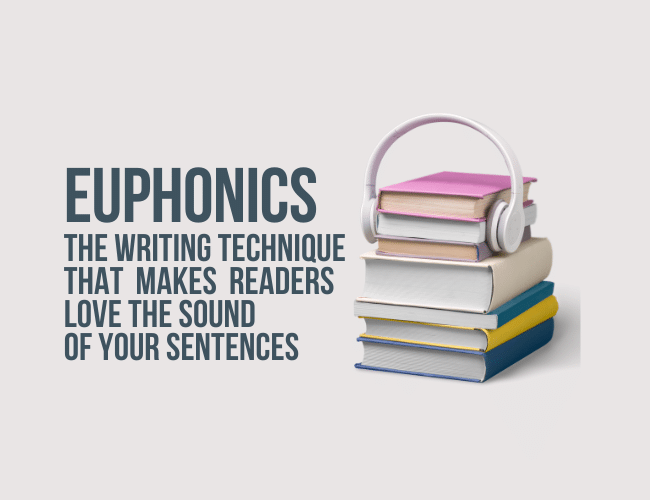
Rayne Hall, author of the Writer’s Craft series, defines euphonics as “the use of sound devices for prose writing.” The dictionary definition of euphonic expands on that to include “a harmonious succession of words having a pleasing sound.”
Understanding this writing technique and applying it to your sentences will make your readers fall in love with your writing!
What’s so Great About This Writing Tecnique?
Poets and musicians have long understood the power of phonetic harmony. It is a foundational element of their work, but it can also be sprinkled into prose as long as the writer takes care not to overuse it. In a story, content is always more important than sound.
Think of euphonics as an enhancer, the seasoning that really makes a recipe sing. Adding a judicious amount brings out the flavors and makes it special. Using too much ruins the effect and can even make it unpalatable.
How Does Euphonics Work?
Reading fiction should be an emotional experience, and euphonics helps create that by working on a reader’s subconscious to evoke images and emotions. Certain sounds affect our psyches in somewhat predictable ways.
There are power words, words that frighten or infuse urgency, words that appeal to our sensual natures.
In English class we learned about similar writing techniques, like onomatopoeia—words that sound like what they mean, such as sizzle, buzz, and boom. Euphonics employ the same idea but on a more subtle, psychological level.
In her book Euphonics For Writers, Rayne Hall spends the first half describing the character of certain sounds in the English language and suggesting when to use them. In the second half of the book, she goes into detail about how to incorporate euphonics into your writing to get maximum value.
Letters, Sounds, and Meaning
In this article, I’ll share a few highlights from the first half of Euphonics For Writers to give you some word lists and ideas for using speech sounds to heighten the effect you're going for.
Read Euphonics For Writers to get the full scoop.
B is for bully
The B sound has a split personality. It’s big and bold and comes with words like braggart, brazen, and bastard. Using words that feature the B sound can infuse the story with a feeling of brutality.
On the other hand, depending on how you use it, B can also be applied in humorous situations. Bungle, belch (remember Sir Toby?), and buffoon are just a few B words that conjure up comedy.
Cheer for joy
The Ch and J sounds give a reader’s subconscious mind reason to cheer: joy, jubilant, jamboree, chuckle, cherish, enjoy. Or just think Joslyn Chase!
Ee is for creepy
Eek! The long E sound evokes an eerie feeling: scream, shriek, creak, fear, flee, squeak, freak, and so on.
F is for frivolous
Think flighty, flake, frolic, frothy, folly, foolish, flutter, flirt, flippant, fun, fling, ruffles, frills, fringe, flourish, flowery, and filigree.
You get the point.
H is high-falutin’
The H sound is another one that can go two ways, depending on how you handle it. It denotes the lofty: heaven, hilltop, haughty, hierarchy, head, happiness, hope, heart.
Or its opposite: heat, hard, horror, hassle, haggard, haunted, hatred, horrible, hell and high-water.
M is for mellow
I remember mama. Warmth, comfort, home. Welcome embrace. Mmmm—good. Or tweaked another way: mournful, morose, melancholy, miserable, moody, glum.
N negates
The N sound suggests no, never, none, nobody, negative, deny, denounce, neglect, and turn down. Nix, nada, nothing.
O is for hero
The long O sound hints at something glorious and noble. Heroic, throne, soul, Lord, hallowed, oath, and follow.
The double O sound, however, connotes gloom and doom. Moon, moor, ooze, spook, wound.
R is in a rush
Use a lot of R sounds when you want to give the impression of urgency or the need for speed. Hurry, race, rapid, scurry, flurry, emergency. Arriba!
S incorporates my favorites
When you want to reinforce the feeling of suspense, use a lot of S: secret, mystery, silence, whisper, sly, hiss, spirit, ghost, specter, spooky, surreptitious, stealthy.
T plus R stands for trouble
Put T and R together and you project trickery and treachery. Terrible, torturous, torment and tribulation. So tragic.
W is wet and wild
Whether you want windy, whirling weather or a billowing, watery wilderness overwhelmed by waves of wandering weeds, use W words. Not to the extent I did, of course. I was just having fun making a point. Remember, enrich, don’t bludgeon.
Z will make you dizzy
The Z sound is an excellent choice for coloring a scene with confusion. Use words like woozy, haze, daze, puzzled, bamboozled, bizarre, crazy, zany.
Take a Page From the Poets
The euphony in your writing should fall easy on the ear, creating a delightful rather than cloying effect.
While euphonics is not precisely poetry, writing techniques like this exercise some of those same muscles, increasing their accessibility in your writing.
If you read Rayne Hall’s book, you’ll learn much about writing techniques and poetic devices such as alliteration, assonance, and consonance and how they apply to euphonics.
What’s more, you’ll learn how to use these devices to layer meaning and power into the different formats of your writing. So, while euphonics was never meant as a substitute for the solid crafting of fiction, it can be a great enhancer. Have fun with it.
Have you ever noticed how some sounds suggest certain moods or images? Have you used these writing techniques in your own writing? Tell us about it in the comments section.
PRACTICE
Euphonics is the word of the day. Look at a scene from something you’re working on. What emotion or impression are you trying to convey? Practice using euphonics to enhance the emotional and psychological impact.
You might consider using a thesaurus to find synonyms that incorporate the sounds you're looking for.
Remember not to be too heavy-handed with the remix. Sprinkle in euphonics judiciously like you would an herb or spice.
If you’d rather, you can use one of these prompts to write a practice scene:
James has to rush to catch a plane to his best friend’s wedding.
Cindy puts together a wishlist for her birthday.
Fred enters a creepy abandoned warehouse on a dare.
Write for fifteen minutes. When you are finished, post your practice in the comments section, and if you post, be sure to provide feedback for your fellow writers!
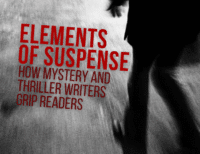
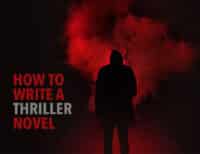
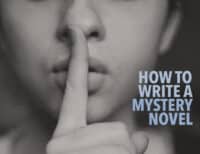
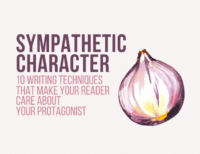



0 Comments
Trackbacks/Pingbacks